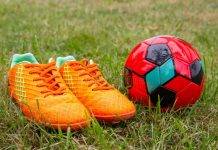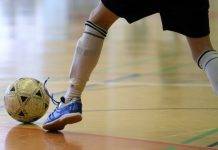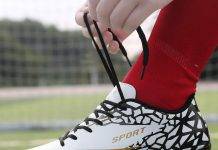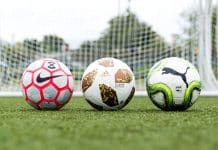Playing sports on artificial turf has become increasingly popular in recent years, but one question frequently arises is whether wearing cleats on this type of surface is okay.
This article explores the debate surrounding using cleats on turf and provides insights into the potential benefits and drawbacks.
From examining player experiences to considering the impact on the turf, we aim to shed light on whether it’s acceptable to lace up our cleats or opt for a different type of footwear when stepping onto the artificial pitch.
Introduction
When it comes to playing sports on turf, one question that often arises is whether it is acceptable to wear cleats. Turf, a surface made of artificial grass or synthetic fibers, is commonly used for various sports such as soccer, football, and field hockey. Conversely, cleats are specialized sports shoes that feature studs or spikes on the sole to provide better traction and grip on natural grass. In this article, we will explore the advantages and disadvantages of playing with cleats on turf and consider alternative footwear options.
What is turf?
Review contents
Definition of turf
Turf, also known as artificial turf or synthetic turf, is a type of surface used in sports fields and recreational areas. It consists of a layer of artificial grass or synthetic fibers, often polyethylene or polypropylene. The grass-like blades on the surface are supported by a layer of infill composed of rubber, sand, or a mixture of both. Turf is designed to imitate the look and feel of natural grass while offering certain advantages, such as better durability and resistance to harsh weather conditions.
Types of turf
Various types of turf are available, each with its distinct characteristics and applications. For outdoor sports fields, one common type is infilled turf, where the artificial grass is supported by a base layer of crushed stone or porous concrete, allowing for proper drainage. On the other hand, non-infilled turf does not have a layer of infill and is often used for indoor sports facilities or landscaping purposes. Hybrid turf, a combination of natural grass and synthetic fibers, is another common type in professional stadiums.
What are cleats?
Definition of cleats
Cleats are athletic shoes designed explicitly for sports played on natural grass surfaces. They are equipped with studs or spikes on the shoe’s sole, which provide enhanced traction and stability. Cleats come in various designs and configurations depending on the sport and playing conditions. For example, soccer cleats have different stud patterns than football or baseball cleats.
Types of cleats
Several types of cleats are available, each designed for specific sports and playing conditions. Traditional cleats feature removable studs, allowing players to customize the length and type of studs based on the playing surface and personal preference. On the other hand, molded cleats have permanently attached studs, usually made of rubber or plastic. They are more versatile and can be used on natural grass and turf surfaces. Finally, turf shoes are specifically designed for turf surfaces and feature small rubber studs or multi-directional treads that provide adequate traction without damaging the turf.
Advantages of playing with cleats on turf
Improved traction
One of the main advantages of playing with cleats on turf is the improved traction they provide. The studs or spikes on the sole of the cleats dig into the turf, allowing players to quickly change direction, accelerate, and decelerate without slipping. This increased traction can be particularly beneficial in sports that require frequent changes in direction, such as soccer or field hockey.
Better balance
Cleats also help to improve balance on turf surfaces. The studs or spikes prevent the player’s feet from sliding or slipping, providing a stable base for various movements and maneuvers. This enhanced stability can be crucial in sports that involve quick turns, sudden stops, and agile footwork.
Enhanced performance
Playing with cleats on turf can lead to enhanced overall performance. With improved traction and balance, players can move more confidently and effectively on the field, allowing them to focus on their skills, strategy, and performance. Cleats can boost agility, speed, and acceleration, enabling athletes to reach their full potential and excel in their respective sports.
Disadvantages of playing with cleats on turf
Increased risk of injury
While cleats offer many advantages on turf, there are also some potential drawbacks. One significant disadvantage is the increased risk of injury. The studs or spikes on cleats, especially those with longer lengths, can become caught in the turf, leading to ankle sprains, knee injuries, or falls. The rigid structure of cleats may also provide less cushioning and shock absorption, potentially increasing the impact on joints and muscles.
Damage to the turf
Another disadvantage of playing with cleats on turf is the potential damage it can cause to the playing surface. Cleats, especially those with metal studs, can dig into the turf and create holes or divots, affecting the overall quality and longevity of the field. This damage impacts the playing experience and requires additional maintenance and repair costs for the facility.
Less comfort
Playing with cleats on turf may also result in less comfort than using other footwear. Turf surfaces can be more complex and less forgiving than natural grass, and cleats’ lack of cushioning and shock absorption may lead to discomfort or foot fatigue. Additionally, cleats’ rigid structure and snug fit may cause discomfort or pressure points, particularly during more extended periods of play.
Considerations for playing with cleats on turf
Type and condition of the turf
When deciding whether to play with cleats on turf, it is essential to consider the type and condition of the turf itself. Different types of turf may have varying levels of grip and traction, and some may be more suitable for cleats than others. Additionally, the condition of the turf, including its firmness or softness, can also impact the performance and safety of wearing cleats.
Playing style and position
An athlete’s playing style and position should also be considered when deciding whether to wear cleats on turf. Players who rely heavily on quick changes in direction, agility, or explosive movements may benefit from cleats’ improved traction and stability. However, those who primarily focus on passing, ball control, or long-range shooting may find that other types of footwear, such as turf shoes, provide better comfort and control on turf surfaces.
Player’s comfort and preference
Lastly, the comfort and personal preference of the player should also be considered. Some individuals may find the advantages of cleats on turf outweigh the potential disadvantages, while others may prioritize comfort and choose alternative footwear options. Ultimately, the decision to wear cleats on turf should be based on what best suits the player’s needs and playing style.
Possible alternatives to cleats on turf
Turf shoes
Turf shoes are an alternative to cleats when playing on turf surfaces. They feature small rubber studs or multi-directional treads on the sole, which provide adequate traction and grip without causing significant damage to the turf. Turf shoes offer improved comfort, cushioning, and flexibility compared to cleats, making them popular for players who prioritize comfort and agility on turf surfaces.
Indoor soccer shoes
Indoor soccer shoes, also known as futsal or court shoes, are specifically designed for indoor sports facilities with turf surfaces. These shoes usually have a flat rubber sole or a combination of small round dimples for traction. Indoor soccer shoes offer excellent grip and maneuverability on turf, making them a suitable alternative to cleats for sports played in indoor arenas or on artificial turf.
Astro turf boots
Astro turf boots, sometimes called artificial grass boots, are designed specifically for playing on artificial turf surfaces. They feature shorter, more numerous studs or rubber cleats to provide the necessary traction and grip on artificial grass. Astro turf boots are less likely to cause damage to the turf compared to longer studs found on traditional cleats, making them a safer choice for playing on artificial turf.
Tips for playing with cleats on turf
Choose the appropriate cleat length
If you decide to play with cleats on turf, choosing the appropriate cleat length is essential. Shorter studs or rubber cleats are generally recommended to reduce the risk of injury and minimize damage to the turf. Longer studs may provide better traction on soft or wet turf but can increase the potential for getting caught in the surface.
Regularly inspect and clean the cleats.
To ensure optimal performance and longevity, inspecting and cleaning your cleats regularly is essential. Remove any dirt, grass, or debris stuck in the studs to maintain their grip and prevent damage to the turf. Inspect the overall condition of the cleats, including the studs and sole, to identify any signs of wear and tear or potential issues that may affect performance or safety.
Adjust playing style for turf.
Playing on turf requires some adjustments to your playing style compared to natural grass. With the added traction of cleats, it may be necessary to modify your movements and techniques to prevent injury. Practice and become familiar with the new surface to optimize your performance and minimize the risk of accidents.
Safety precautions for playing with cleats on turf
Warm up and stretch properly
Before playing on turf with cleats, it is crucial to warm up and stretch properly. This helps to prepare your muscles, joints, and ligaments for the demands of the game and reduces the risk of strain or injury. Focus on dynamic stretches that mimic the movements you will be performing during the game.
Avoid sudden movements
Because cleats provide better traction on turf, avoiding sudden movements or excessive force that may strain or injure your muscles or joints is essential. Be mindful of quick changes in direction, abrupt stops, or overly aggressive tackles that may increase the risk of injury.
Stay hydrated
Playing on turf can be physically demanding, especially during hot weather. Staying hydrated before, during, and after the game is essential to prevent dehydration and maintain optimal performance. Drink water or sports drinks regularly to replenish fluids and electrolytes lost through sweating.
Conclusion
Playing with cleats on turf can offer significant advantages such as improved traction, better balance, and enhanced performance. However, it is essential to consider the potential disadvantages, including an increased risk of injury, potential damage to the turf, and less comfort compared to alternative footwear options.
Factors such as the type and condition of the turf, playing style and position, and individual comfort and preference should be considered when deciding whether to wear cleats on turf.
By following safety precautions, regularly maintaining the cleats, and considering alternative footwear options, athletes can make an informed decision and enjoy a safe and enjoyable game on turf.





































